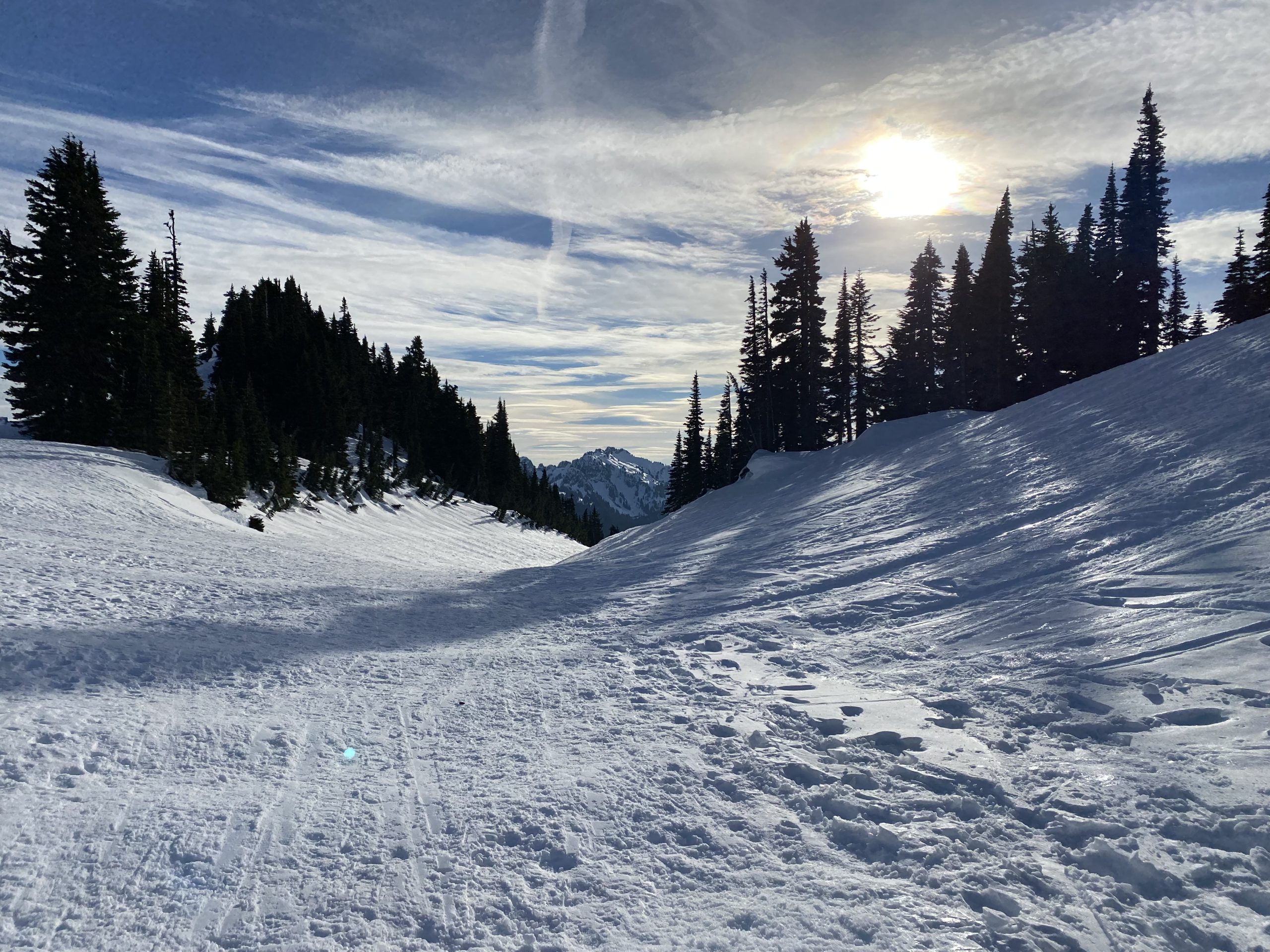
Snow Skills
Snow Skills

Snow skills covers beginner and intermediate mountaineering skills beginning with dressing appropriately for the weather and workload, pressure breathing and using the rest step, kicking steps and climbing in balance when on snow, and efficient pacing that allows us to climb comfortably. Additionally, you will learn crampon techniques, and how to self-arrest using an ice ax in case of a fall. Learn and practice the skills you will need to begin climbing mountains such as Pahto (Mt. Adams) and Loowit (St. Helens).
Continue building your mountaineering skills with our Crevasse Rescue clinic.
Trip Details
Logistics
- Meet Location: 5007 Pacific Hwy E, Suite 19, Fife 98424
- Meet Time: 9 AM
- End Time: Approximately 3 PM
Gear Provided
- Backpack for group gear
- First-aid kit and satellite phone
Highlights
Mountain Skills – Self-Arrest – Self-Rescue
Difficulty Level
Intermediate: May require participants to hike significant elevation gain
Price: $300 per person
Photo Gallery



Indigenous Land
Nisqually
“It [Lushootseed] is from the beginning strength of the people, and it is from what the Creator put down upon this land for people…. The earth speaks. The animals speak. Everything has a voice.”
Vi Hilbert, Grandmother Video Project
The traditional homeland of the Nisqually people includes about two million acres of the Nisqually River drainage from Mt. Rainier to Olympia. They have inhabited this land for thousands of years, since, according to their history, their ancestors, the Squalli-absch, came north across the Cascades from the Great Basin. Nisqually life, territory, and culture have been heavily impacted by the European invasion of the Puget Sound area, and they have fought hard to maintain their identity and dignity in the face of displacement, violence, and suppression. Multiple names around the Puget Sound area honor Leschi, a war chief of the Nisqually Tribe during the mid 19th century, who, along with his brother Quiemuth, led the fight for his people’s right to remain on their ancestral homeland.
The Nisqually way of life revolves around salmon, and today, they lead the stewardship of fisheries resources in the Nisqually River area. The tribe operates two fish hatcheries on Clear Creek and Kalama Creek. The tribe’s resilience, dedication, and commitment can be seen in their continued efforts to come alongside, guide, and lead these efforts to care for the land.
Nisqually is a Southern Coast Salish language, and is a dialect of Lushootseed. Stories, songs, and other Nisqually language resources can be found on the tribe’s website, www.nisqually-nsn.gov.

